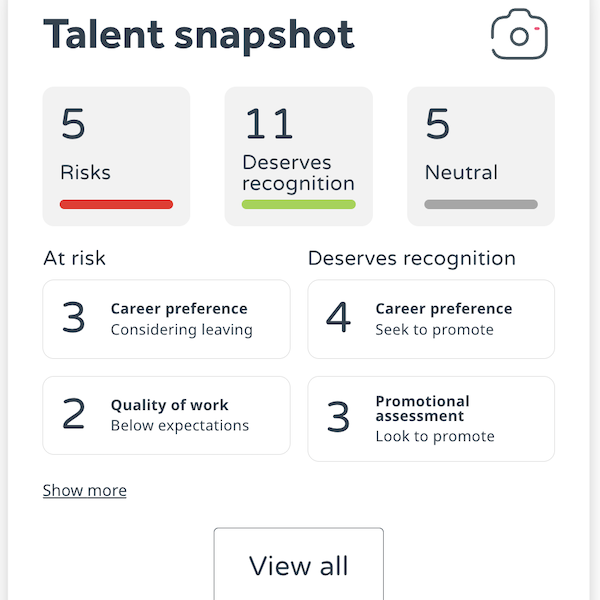New employees shine a beacon of hope on a business when they join – they are full of enthusiasm, eager to share ideas and determined to succeed, but all too often we see employee engagement barriers prevent them from developing.
Imagine if you could bottle the new-joiner elixir and drip-feed it to all your staff!
Keeping employees engaged beyond the honeymoon period isn’t a walk in the park. Gallup’s State of the Global Workplace 2021 Report confirms that many businesses are a long way from hitting the mark – roughly 7 in 10 employees are struggling rather than thriving and 80% are not engaged or are actively disengaged at work.
It’s a worrying and complex problem that businesses need to solve.
But disengagement isn’t down to one single factor, and it doesn’t happen overnight – there are many barriers that can derail a happy and productive employee.
Here we look at some of the main challenges of employee engagement.
 Common employee engagement barriers
Common employee engagement barriers
Poor leadership
Most staff get extra attention in the first few weeks and even months of starting their job – there’s training, getting to know the team, and getting to grips with the role. But once the honeymoon period fades away and managers lose focus, employee engagement can quickly disintegrate. Poor leadership correlates with negative employee experience. It’s a well-known fact that bad bosses are the number one reason employees quit!
So, what makes a poor leader?
Poor leadership comes in many forms – from the over-bearing micromanager to people pleasers and those who lack presence.
Poor leaders exclude certain team members from decision-making. They don’t make important instructions clear and are surprised when some employees don’t understand. They generally assume that others have the same opinion as them. They don’t ask for feedback, only give out negative feedback, and are dismissive when employees raise concerns. Transparency is often lacking.
Under poor leadership, staff are quickly disenchanted, demotivated, and lose trust. When this happens, productivity takes a nosedive.
Employees need a strong fair leader and clear direction. Effective leadership is even more important for remote employees.
Poor communication
Another key aspect of positive employee engagement is ensuring employee voices are heard. This requires effective two-way communication. Alongside poor leadership, poor communication is one of the biggest barriers to employee engagement.
Ineffective communication is incredibly frustrating to employees. It promotes inefficiency and creates a breeding ground of distrust and confusion. Without good lines of communication, workers don’t feel like they’re being heard. Ultimately, poor communication erodes loyalty and commitment to the organisation.
Lack of resources
Lack of resources is another barrier to employee engagement. If employees aren’t given the right tools, how can they perform at their best? It’s yet another frustration for employees which impacts how they are feeling at work. It not only hinders efficiency, but also feeds into a personal sense of underinvestment.
Poor training and a lack of mentorship
The purpose of training and mentorship is to help employees improve performance, increase knowledge, and expand skills. Importantly, this makes employees feel valued. Companies that have no training opportunities and no mentorship schemes are promoting a culture which says learning isn’t important. It is hardly inspiring for employees.
Lack of collaboration
Teamwork and camaraderie are a big part of company culture – essential ingredients for making employees feel part of something. Collaboration enables employees to learn from each other. It improves communication, inspires people, breaks down employee engagement barriers, enables better problem solving and helps employees see the bigger picture – all of which contribute to motivation and productivity.
In fact, employee happiness is dependent on relationships with co-workers. A lack of collaborative opportunities thwarts the process of creating bonds, meaning employees are less happy and less engaged. When people aren’t working together as a team, it pares back the concept of ‘we’ and leads to feelings of isolation.
Excessive workload

Why? Surely more hours equate to increased output? On the contrary; excessive workloads have a negative impact on employee health. Consistently overworking leads to greater stress. Research by Benenden Health found that nearly 40% of mental health issues at work are caused by increased workload. Stress is a known barrier to employee engagement.
Persistent stress at work leads to poor morale, more mistakes, a risk of burnout, and higher absenteeism. In the end, it impacts retention too – overwhelmed staff are more likely to leave.
No career growth opportunities
Motivated, engaged employees need clear paths for personal growth and career development. Why? Well, for starters, it illustrates investment in them and their progression. Feeling like they are stuck in a dead-end job is the ultimate employee engagement barrier for your people!
Why waste potential? Career growth is one of the main reasons that employees choose to work at a company. Companies that ignore this fact are asking for retention and recruitment problems.
Lack of meaning
The ‘new normal’ is an opportunity for employers to evaluate purpose and consider how this reflects on the everyday work of each employee. Global management consultancy firm, McKinsey, have discovered that post-pandemic employees want greater meaning in their work – in a survey of US employees, nearly half said they are reconsidering the kind of work they do because of the pandemic.
Employees need greater clarity about why the organisation they work for exists. Without it, employee engagement suffers. For employees to be engaged in the workplace, they must believe in and be aligned with the company purpose, vision and goals.
Breaking down barriers
As we reimagine workplaces post-pandemic, business leaders must recognise the importance of employee engagement for organisational resilience, productivity, and success.
WeThrive’s employee experience platform keeps on top of employee engagement issues, helping people to thrive not just survive. Get a 360 view of your people by monitoring health, engagement and motivation and transform feedback into instant actions for employees and managers.
We help businesses break down the barriers that prevent employee engagement.
 Common employee engagement barriers
Common employee engagement barriers
